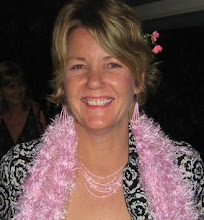The Mahara team describes an ePortfolio as “an extension of the paper based-portfolio” which brings with it the benefit of making a portfolio of evidence, portable and shareable, with functions that enable the users to personalise content and layout to meet their specific, differing or changing requirements (Mahara.org. 2009).
My understanding is that students can demonstrate their learning, skills and development and record their achievements over time to a selected audience, all within their own ePortfolio. The features of the Mahara portfolio system include a weblog, resume builder and social networking system. All terms that digital natives would be very familiar with. These features enable the user to make connections to a vast range of online learner communities.
As future Learning Managers we all know the importance of reflective learning. An ePorfolio allows for reflective activities, through the use of the blog function, in which users can reflect on their learning and experiences over a given period or activity. This framework for technology based teaching and learning ties in with Kearsley and Shneiderman’s (2009) Engagement Theory, where the role of technology fosters creativity and communication which is needed to facilitate all aspects of engagement.
Once again as a digital immigrant, the process of setting up another account, this time a Mahara account, proved very challenging. I created my account through Netspot, paid the $5 with my paypal account, changed my password and there I was logged in. The thing is, when I went to log in later, I had to change my password again and starting thinking, am I going to be up for another $5. Right, I am logged in, now what? I found Mahara very confusing and hard to navigate, even after reading through the instructions and watching the video tutorials numerous times. While I think the concept behind Mahara is exciting and very creative, for me, feeling comfortable using Mahara in the classroom would take some time and lot of playing. For this reason, using Mahara in my classroom is a challenge resigned for the future.
Until next time cheers.
CQUniversity Australia. (2009, T2). FAHE11001-Managing e-learning: Study Guide. Rockhampton, Qld, Australia: Author.
Kearsley, G. & Shneiderman, B. (2009). Engagement theory: A framework for technology-based teaching and learning. Retrieved 13th August, 2009 from http://home.sprynet.com/~gkearsley/engage.htm
Mahara.org. (2009). Open source portfolios. Retrieved 15th August, 2009, from http://mahara.org/

No comments:
Post a Comment